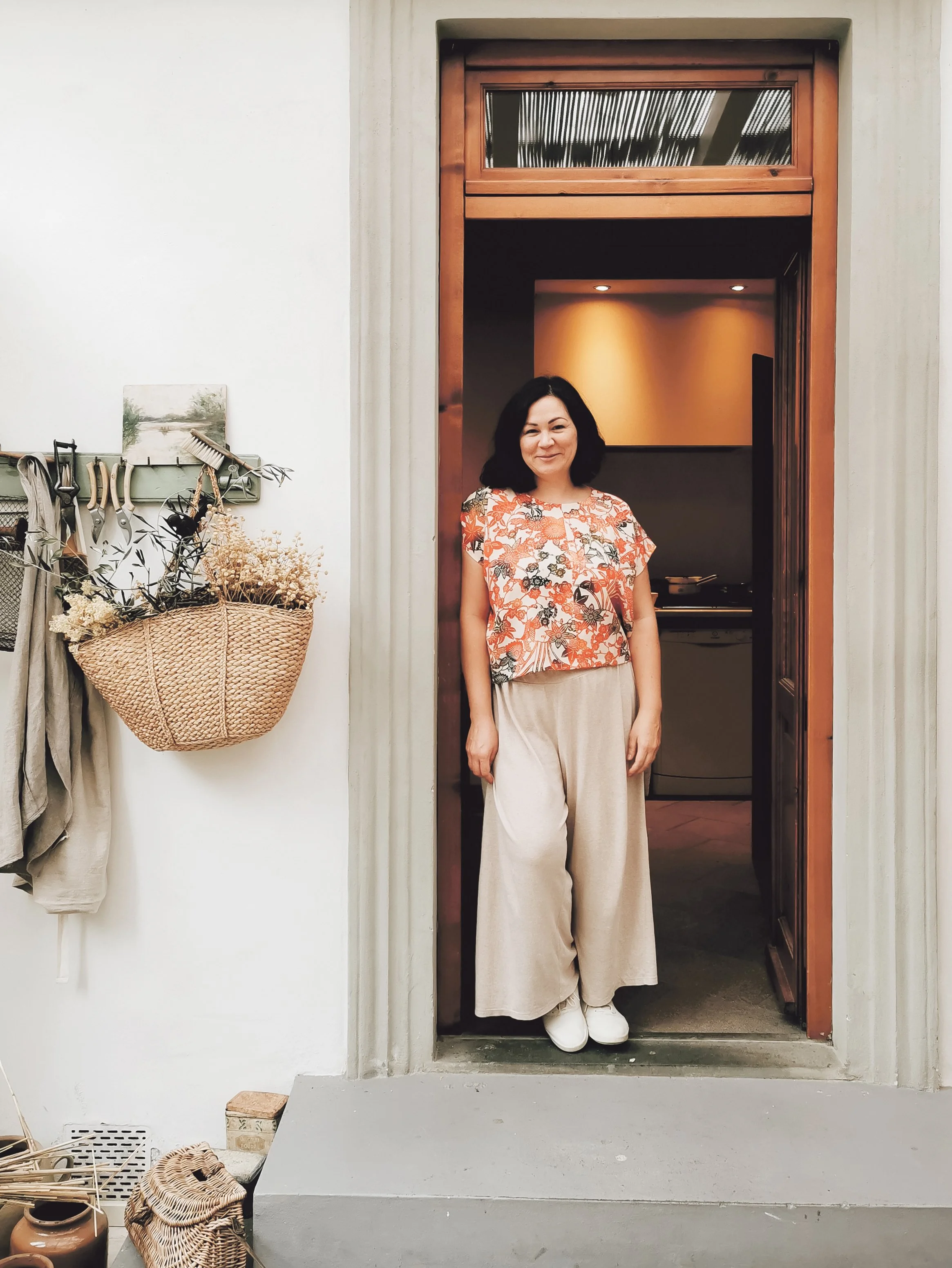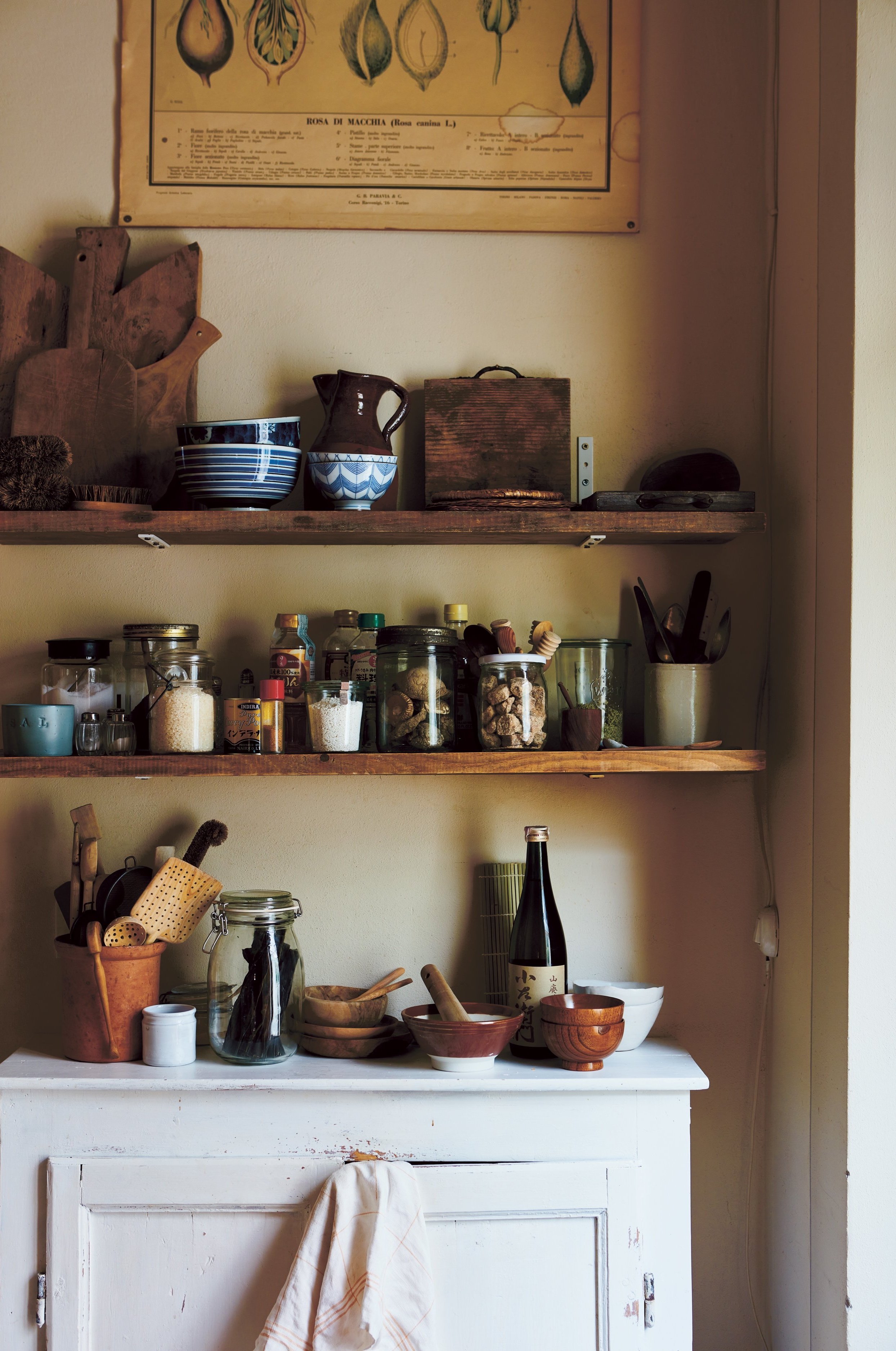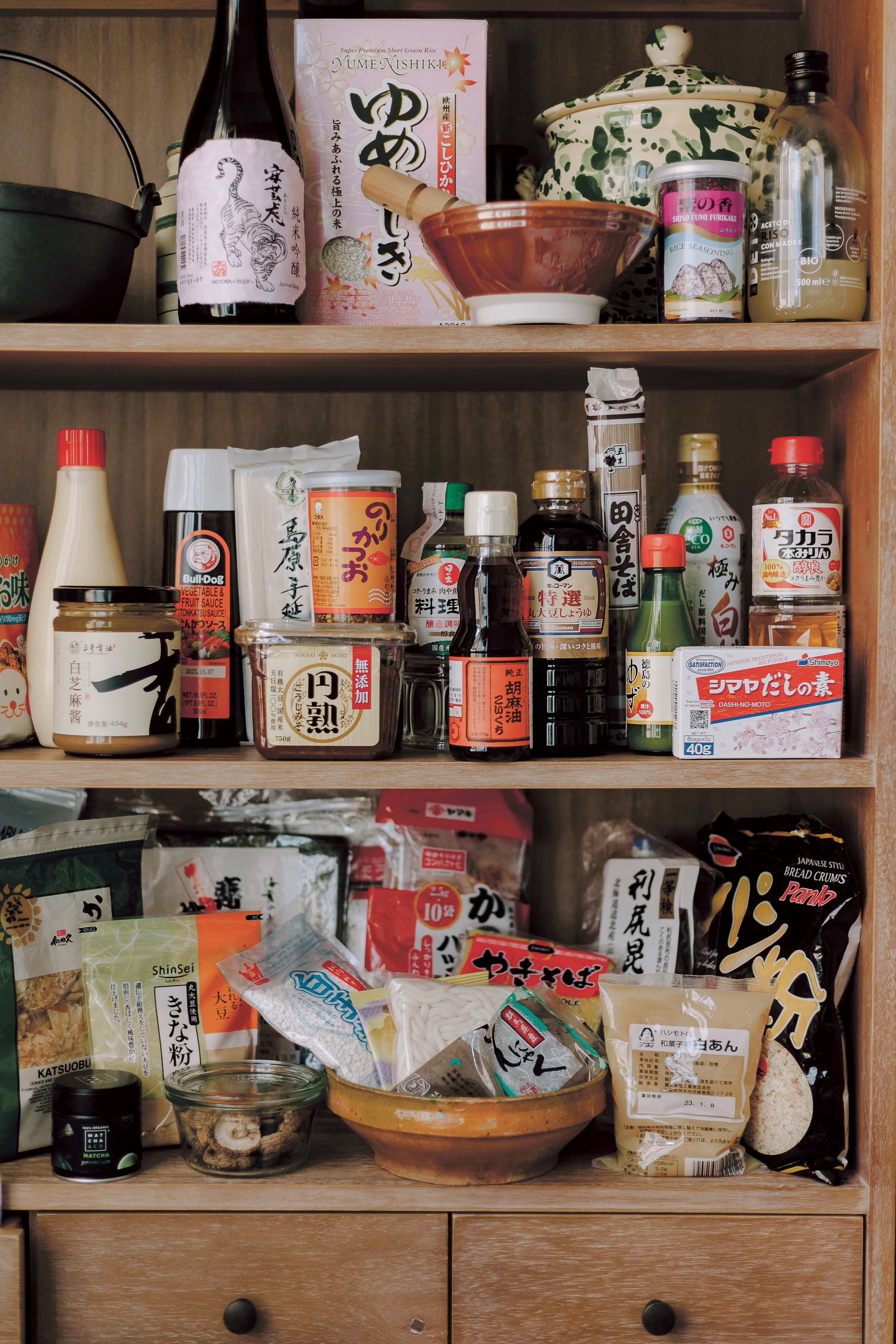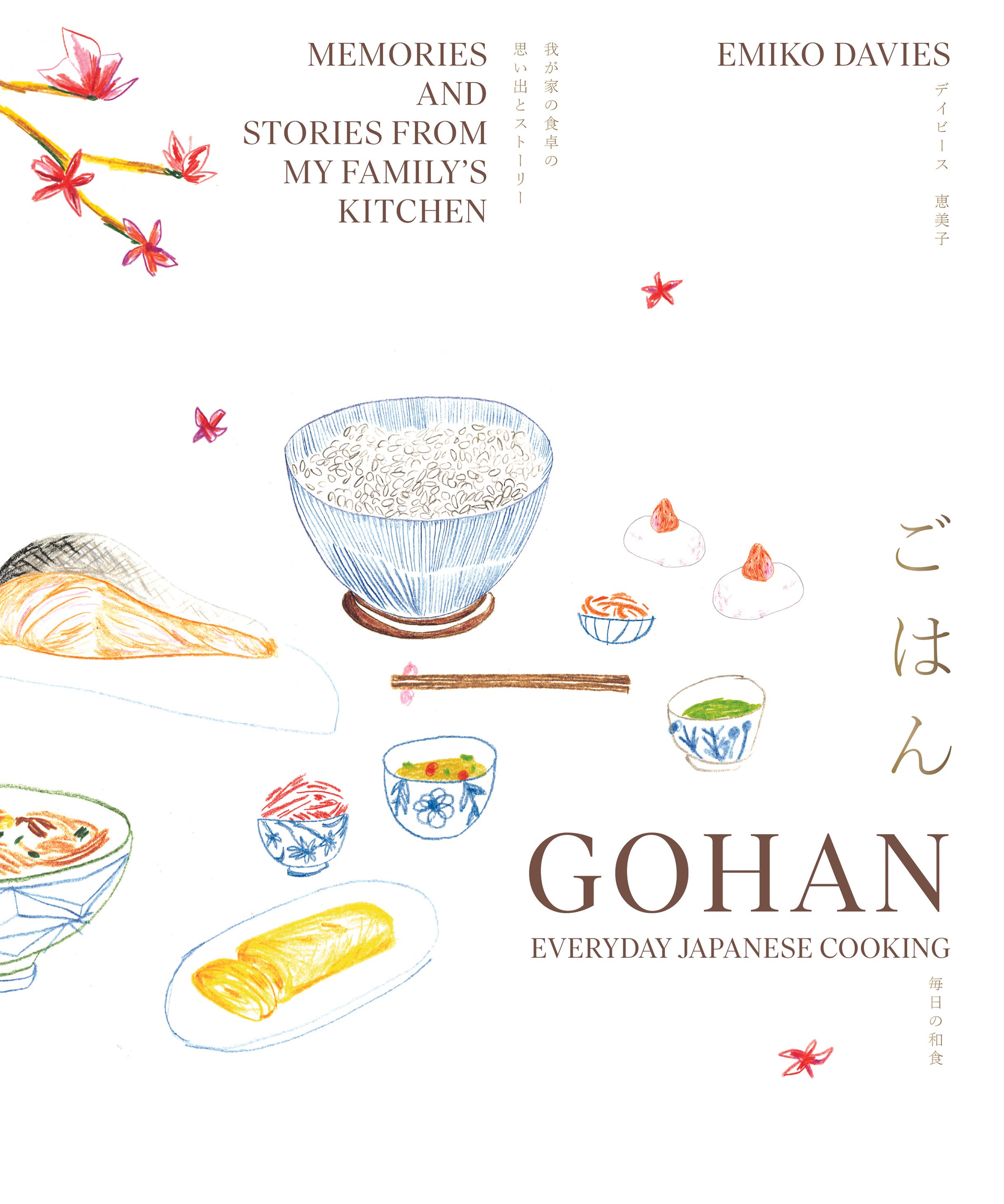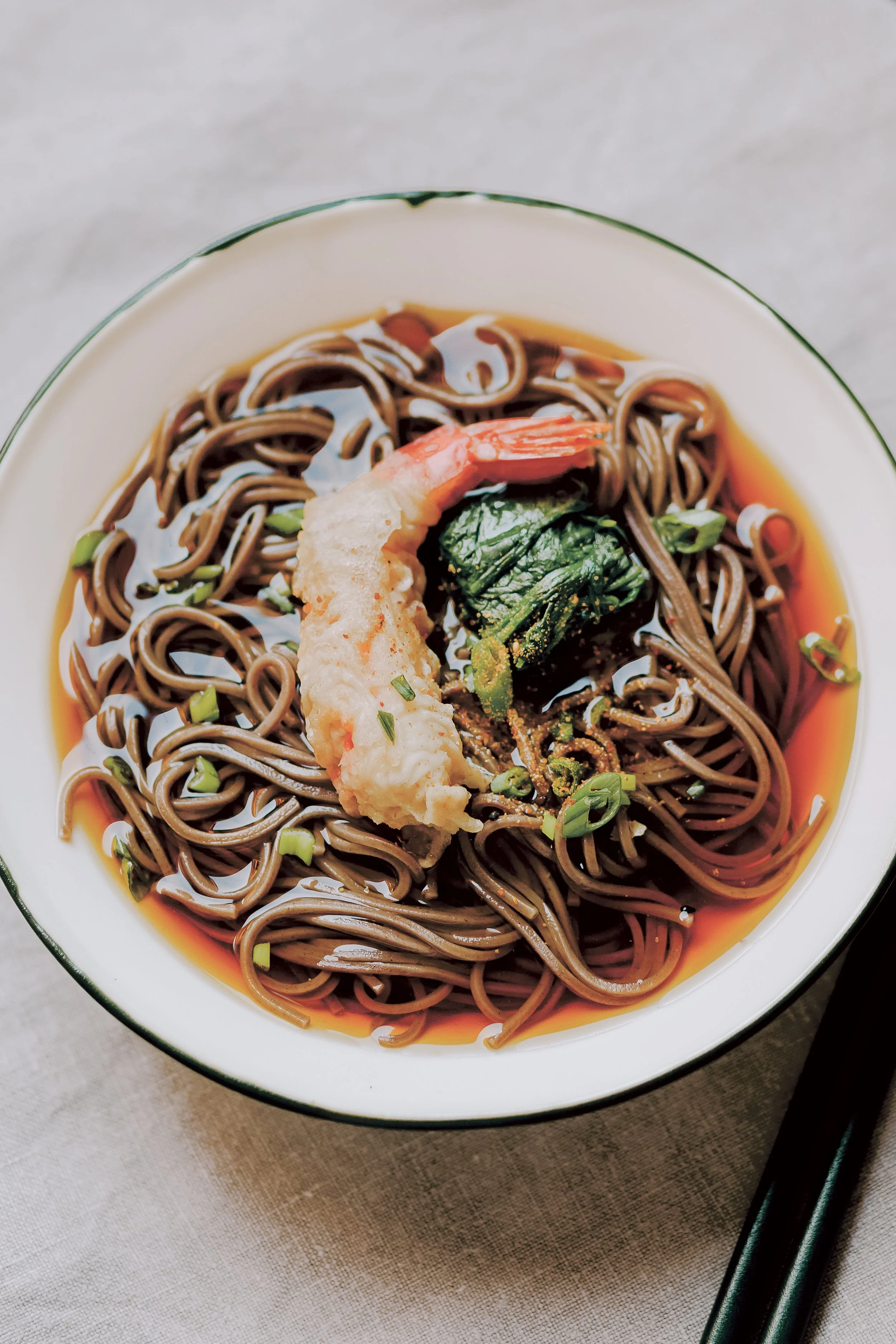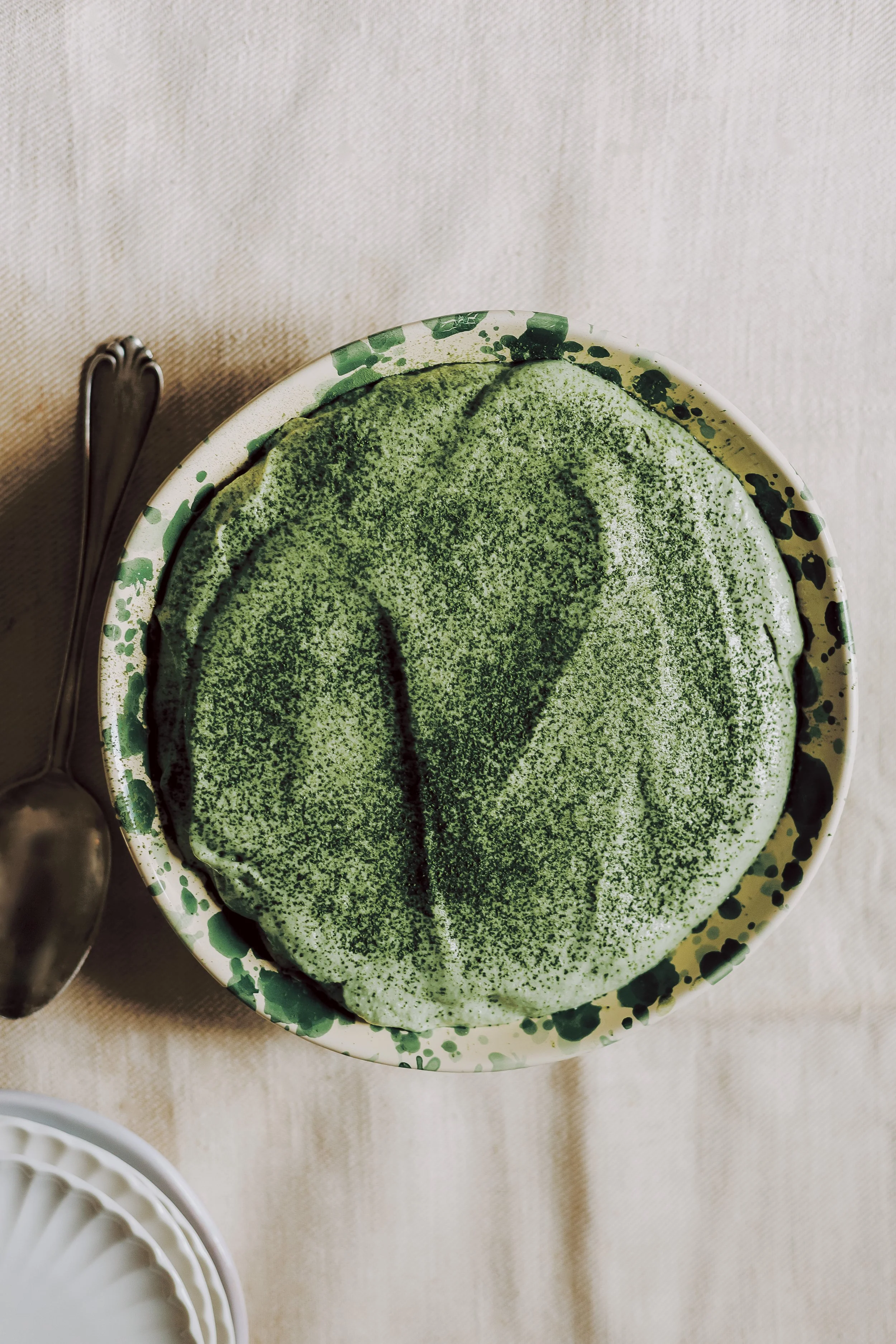GOHAN – Everyday Japanese Cooking by Emiko Davies
GOHAN: Everyday Japanese Cooking, by Emiko Davies, is a cookbook filled with memories and stories from Emiko’s family kitchen. We share a recipe from the new book – matcha tiramisu!
Photography: Emiko Davies & Yuki Sugiura
Japanese cooking pantry staples. Photo: Emiko Davies.
GOHAN – Everyday Japanese Cooking by Emiko Davies is available now!
“Gohan literally means ‘rice’ in Japanese – and when I think of this word, I think quite specifically about a small ceramic bowl of fragrant, glistening, steamed, slightly sticky rice.”
New Year’s Soba from GOHAN. Photo: Emiko Davies.
Shaping and rolling futomaki – sushi rolls! Photo: Emiko Davies.
Emiko Davies’ new cookbook GOHAN: Everyday Japanese Cooking, take us through simple, quick and easy home-cooked Japanese inspired recipes – each recipe is an evocative journey through Erika’s heritage, showing us the power of food with an emphasise on meals made with love.
Gohan literally means ‘rice’ in Japanese. But also, as Emiko’s mother, Sumie, says: ‘Gohan means the everyday home-cooked meal.’
‘Gohan to me means nothing fussy, but quick and easy, and nourishing. One that is made with love. I think the best food is created when you cook for someone you love,’ shares Emiko.
Across its chapters, Emiko has collected recipes from her childhood through to today. These are recipes which are comforting, easy to prepare, full of nostalgia and rich with heritage: fresh home-made tofu, the perfect bowl of Japanese rice, tempura vegetable fritters, chestnut-filled dorayaki pancakes and more.
Below we share a recipe from the new cookbook: matcha tiramisu.
This in an edited extract from GOHAN: Everyday Japanese Cooking by published by Smith Street Books, distributed by Thames & Hudson Australia. Purchase the book online now here.
Matcha Tiramisu from GOHAN, recipe shared below. Photo: Emiko Davies.
Chilled Dressed Tofu from GOHAN. Photo: Emiko Davies.
MATCHA TIRAMISU
I am generally not one for mashing up two such important cultural icons, but I have to admit that this is really good – the sweetness of the mascarpone cream and the bitterness of matcha are just a match made in heaven – to the point that matcha tiramisu has become a classic in its own right. I love this in a pretty bowl or you can do individual portions in glasses or ramekins.
Serves 4-6
INGREDIENTS
3 eggs, separated
70 g (scant ⅓ cup) sugar
300 g (1¼ cups) mascarpone
2 teaspoons matcha (green tea powder, see note below), plus extra for dusting
125 ml (½ cup) water
100 g (3½ oz) savoiardi biscuits (sponge fingers)
METHOD
To make the mascarpone cream, whisk the egg whites (make sure you use a very clean bowl – glass or metal is best – and very clean beaters to quickly get beautifully stiff whites) until you have soft, fluffy peaks that hold their shape.
In a separate bowl, whip the egg yolks with the sugar until you have a creamy and pale mixture. Whip in the mascarpone, 1½ teaspoons of the matcha, and finally fold in the egg whites. Set aside (if not using immediately, store covered in the fridge).
Mix the remaining ½ teaspoon of matcha in the measured water. Quickly dip one side (and one side only) of a savoiardi biscuit into the matcha and layer, matcha-side up, in a baking dish or large bowl. Repeat until you have a nice, tight layer that covers the base of the dish. Cover the savoiardi with a thick layer of matcha cream. Repeat to make another layer of savoiardi dipped in matcha, and finish with another layer of cream.
Cover and chill in the fridge overnight (or for at least 4 hours, if you are in a hurry, but the longer the better). When ready to serve, dust with more matcha powder.
NOTE
Matcha powder has different grades and these grades correspond to different colours and prices. Matcha powder is separated into ceremonial-grade tea, the highest you can find, which makes a thick, very special, intense, vibrant green tea. Then you have culinary-grade matcha with a bright matcha colour, and you have ingredient-grade, which is the lowest grade and has a slightly yellower or olive-green colour. If you want a very nice, bright green colour, you could go for the culinary-grade matcha, but be aware it’s not suitable for making tea with – or just splurge on a ceremonial-grade one that you can also use for making cups of tea.


